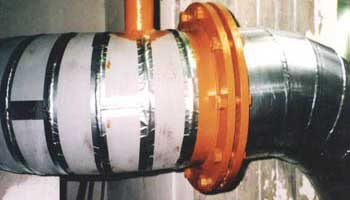Corrosion Protection for Steel Pipes
Surface Preparation
Where a corroding pipe line is to be protected there are two key elements. Firstly the steel must be protected from further exposure to external elements, and secondly the steel must be protected from any corrosion occurring below the protective layer. In old pipes this is a significant issue, as chlorides trapped in pits for example can lead to rapid failure using conventional coatings. That is why a very high level of surface preparation is essential with conventional coatings.
The normal blast clean requirements to get bright steel to the SA 2.5 level is to open and clean out all pits so that there is no corrosion locked in beneath the coating. Whist this is good practice when using ZincTape, it is not so critical as the ZincTape provides galvanic protection at any localised corrosion cells.
As with most types of coating, correct surface preparation is essential in achieving the optimum performance of the applied coating. Because of the many applications of ZincTape it is recognised that it would be impractical to use the same method of surface preparation for all types of substrate, therefore we have listed a number of methods of surface preparation, all of which are suitable for the various substrates in their particular operating conditions. Follow the link for a full list of surface preparation methods.
Application methods
ZincTape is very easy to apply to pipes, even when they are already in fixed in place. The main methods of application of ZincTape are:
- Spiral-wrapping
- Cigarette-wrapping
These methods are covered in detail on the ZincTape application methods page, which covers the metapress and the metawrapper, two tools custom designed for the application of ZincTape. SRCP can provide these tools, depending on the size of the job and your individual needs.
Tips
- A ZincTape strip should cover each relevant weld seam without interruption, extending 20 mm on each side (90o) to the weld, prior to coating the substrate proper.
- During application, the tape should be pulled constantly without deforming it.
- Air voids can be removed by pricking the ZincTape with a Craft Knife and rubbing with a wooden or hard-plastic spatula to ensure a good bond throughout.
- Where ZincTape is applied to irregular shaped or previously corroded and pitted steel the use of a rubber mallet is also effective in ensuring good adhesion on pitted or irregular shaped areas.


